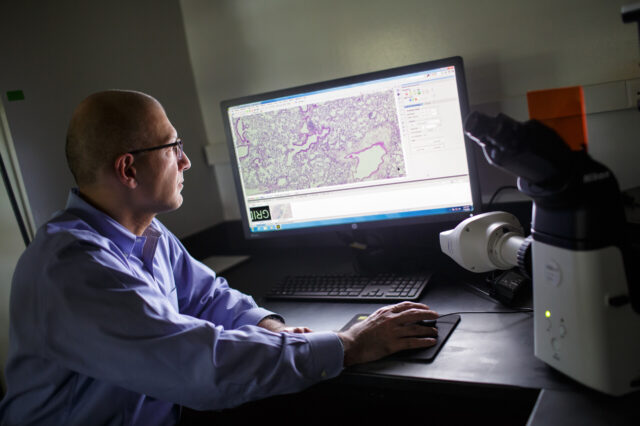Definition
Reportable diseases are diseases considered to be of great public health importance. In the United States, local, state, and national agencies (for example, county and state health departments or the United States Centers for Disease Control and Prevention) require that these diseases be reported when they are diagnosed by doctors or laboratories.
Reporting allows for the collection of statistics that show how often the disease occurs. This helps researchers identify disease trends and track disease outbreaks. This information can help control future outbreaks.
Information
All US states have a reportable diseases list. It is the responsibility of the health care provider, not the patient, to report cases of these diseases. Many diseases on the list must also be reported to the US Centers for Disease Control and Prevention (CDC).
Reportable diseases are divided into several groups:
- Mandatory written reporting: A report of the disease must be made in writing. Examples are gonorrhea and salmonellosis.
- Mandatory reporting by telephone: The provider must make a report by phone. Examples are rubeola (measles) and pertussis (whooping cough).
- Report of total number of cases. Examples are chickenpox and influenza.
- Cancer. Cancer cases are reported to the state Cancer Registry.
Diseases reportable to the CDC include:
- Anthrax
- Arboviral diseases (diseases caused by viruses spread by mosquitoes, sandflies, ticks, etc.) such as West Nile virus, eastern and western equine encephalitis
- Babesiosis
- Botulism
- Brucellosis
- Campylobacteriosis
- Chancroid
- Chickenpox
- Chlamydia
- Cholera
- Coccidioidomycosis
- Cryptosporidiosis
- Cyclosporiasis
- Dengue virus infections
- Diphtheria
- Ehrlichiosis
- Foodborne disease outbreak
- Giardiasis
- Gonorrhea
- Haemophilus influenza, invasive disease
- Hantavirus pulmonary syndrome
- Hemolytic uremic syndrome, post-diarrheal
- Hepatitis A
- Hepatitis B
- Hepatitis C
- HIV infection
- Influenza-related infant deaths
- Invasive pneumococcal disease
- Lead, elevated blood level
- Legionnaire disease (legionellosis)
- Leprosy
- Leptospirosis
- Listeriosis
- Lyme disease
- Malaria
- Measles
- Meningitis (meningococcal disease)
- Mumps
- Novel influenza A virus infections
- Pertussis
- Pesticide-related illnesses and injuries
- Plague
- Poliomyelitis
- Poliovirus infection, nonparalytic
- Psittacosis
- Q-fever
- Rabies (human and animal cases)
- Rubella (including congenital syndrome)
- Salmonella paratyphi and typhi infections
- Salmonellosis
- Severe acute respiratory syndrome-associated coronavirus disease (SARS CoV-2)
- Shiga toxin-producing Escherichia coli (STEC)
- Shigellosis
- Smallpox
- Syphilis, including congenital syphilis
- Tetanus
- Toxic shock syndrome (other than streptococcal)
- Trichinellosis
- Tuberculosis
- Tularemia
- Typhoid fever
- Vancomycin intermediate Staphylococcus aureus (VISA)
- Vancomycin resistant Staphylococcus aureus (VRSA)
- Vibriosis
- Viral hemorrhagic fever (including Ebola virus, Lassa virus, among others)
- Waterborne disease outbreak
- Yellow fever
- Zika virus disease and infection (including congenital)
The county or state health department will try to find the source of many of these illnesses, such as food poisoning. In the case of sexually transmitted diseases (STDs), the county or state will try to locate sexual contacts of infected people to make sure they are disease-free or are treated if they are already infected.
The information gained from reporting allows the county or state to make informed decisions and laws about activities and the environment, such as:
- Animal control
- Food handling
- Immunization programs
- Insect control
- STD tracking
- Water purification
The provider is required by law to report these diseases. By cooperating with state health workers, you can help them locate the source of an infection or prevent the spread of an epidemic.
References
Centers for Disease Control and Prevention website. National Notifiable Diseases Surveillance System (NNDSS). www.cdc.gov/nndss/index.html. Updated February 15, 2022. Accessed March11, 2022.
